AI
> Adahdouh
Can AI detect emotions better than humans?
Introduction “The question is not whether intelligent machines can have any emotions, but whether machines can be intelligent without any emotions”.
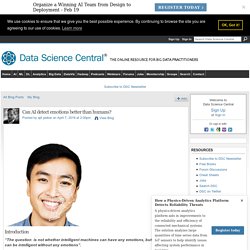
Marvin Minsky. An electronic chip that makes 'memories' is a step towards creating bionic brains. What better way to build smarter computer chips than to mimic nature’s most perfect computer – the human brain?
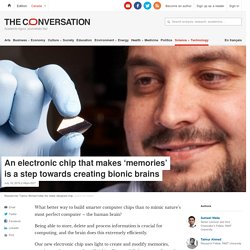
Being able to store, delete and process information is crucial for computing, and the brain does this extremely efficiently. Our new electronic chip uses light to create and modify memories, moving us closer towards artificial intelligence (AI) that can replicate the human brain’s sophistication. To develop this, we drew inspiration from a new technique called optogenetics, to develop a device that replicates the way the brain stores (and loses) information. Optogenetics involves using light to control cells in living tissue, typically nerve cells (neurons).
Read more: Exciting cells and controlling heartbeats – could optogenetics create drug-free treatments?
Explaining nonlinear classification decisions with deep Taylor decomposition. Open Access Highlights A novel method to explain nonlinear classification decisions in terms of input variables is introduced.

The method is based on Taylor expansions and decomposes the output of a deep neural network in terms of input variables. The resulting deep Taylor decomposition can be applied directly to existing neural networks without retraining. The method is tested on two large-scale neural networks for image classification: BVLC CaffeNet and GoogleNet.
A radical new neural network design could overcome big challenges in AI. David Duvenaud was collaborating on a project involving medical data when he ran up against a major shortcoming in AI.
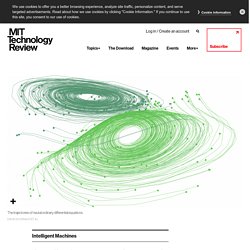
An AI researcher at the University of Toronto, he wanted to build a deep-learning model that would predict a patient’s health over time. But data from medical records is kind of messy: throughout your life, you might visit the doctor at different times for different reasons, generating a smattering of measurements at arbitrary intervals. A traditional neural network struggles to handle this. Its design requires it to learn from data with clear stages of observation. Thus it is a poor tool for modeling continuous processes, especially ones that are measured irregularly over time.
AI Nationalism — Ian Hogarth. How babies learn – and why robots can’t compete. Deb Roy and Rupal Patel pulled into their driveway on a fine July day in 2005 with the beaming smiles and sleep-deprived glow common to all first-time parents.
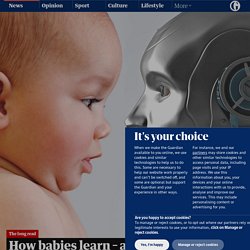
Pausing in the hallway of their Boston home for Grandpa to snap a photo, they chattered happily over the precious newborn son swaddled between them. This normal-looking suburban couple weren’t exactly like other parents. Roy was an AI and robotics expert at MIT, Patel an eminent speech and language specialist at nearby Northeastern University. For years, they had been planning to amass the most extensive home-video collection ever. From the ceiling in the hallway blinked two discreet black dots, each the size of a coin.
Who will win the World Cup 2018, according to UBS - Business Insider. Google ‘fixed’ its racist algorithm by removing gorillas from its image-labeling tech. Back in 2015, software engineer Jacky Alciné pointed out that the image recognition algorithms in Google Photos were classifying his black friends as “gorillas.”
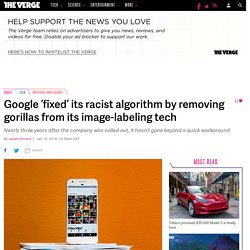
Science fiction enthusiasts have a positive attitude to the digitizing of the brain. Smarter brains run on sparsely connected neurons. Robots may someday explore the world using features borrowed from your brain. An AI program trained to navigate through a virtual maze has unexpectedly developed an architecture that resembles the neural “GPS system” found inside a brain.
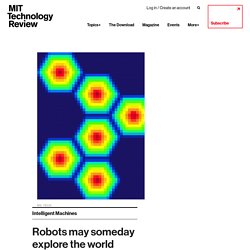
AI researchers allege that machine learning is alchemy. Ali Rahimi, a researcher in artificial intelligence (AI) at Google in San Francisco, California, took a swipe at his field last December—and received a 40-second ovation for it.
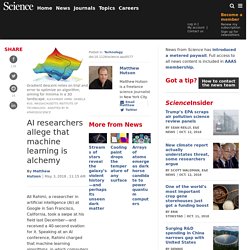
Speaking at an AI conference, Rahimi charged that machine learning algorithms, in which computers learn through trial and error, have become a form of "alchemy.
"
Neuroscientists train a deep neural network to process sounds like humans do. Fowl Language: AI Decodes the Nuances of Chicken "Speech"
Chickens are loquacious creatures, and Kevin Mitchell would know.

He oversees the care of about a million of them on Wilcox Farms properties in Washington State and Oregon. Mitchell says the birds have “patterns of speech” that reveal a lot about their well-being.
6 Easy Steps to Learn Naive Bayes Algorithm (with code in Python)
This article was posted by Sunil Ray.

Sunil is a Business Analytics and BI professional. Source for picture: click here. What Does it Mean to Prepare Students For a Future With Artificial Intelligence?
Last year, in the height of the election season, the Obama administration quietly released a national strategic plan for artificial intelligence (AI) research and development. The plan was the beginning of a national effort to prepare Americans for a future with AI—a future some computer scientist believe our nation is ill-equipped to handle. AI has become a part of the American fabric for some time. Siri and Alexa are already taking orders, self-driving cars have hit some streets, and the concept of interconnectivity is now a reality through the Internet of Things.
But experts assert that in order for the society to fully embrace AI, learning machines should not replace human workers, but complement them.
Artificial Intelligence, Automation, and the Economy. Editor’s Note: Staff from the Council of Economic Advisers, the Domestic Policy Council, the National Economic Council, the Office of Management and Budget, the Office of Science and Technology Policy contributed to this post. Today, in order to ready the United States for a future in which artificial intelligence (AI) plays a growing role, the White House released a report on Artificial Intelligence, Automation, and the Economy. This report follows up on the Administration’s previous report, Preparing for the Future of Artificial Intelligence, which was released in October 2016, and which recommended that the White House publish a report on the economic impacts of artificial intelligence by the end of 2016. Accelerating AI capabilities will enable automation of some tasks that have long required human labor.
These transformations will open up new opportunities for individuals, the economy, and society, but they will also disrupt the current livelihoods of millions of Americans.
The Dark Secret at the Heart of AI - MIT Technology Review. Last year, a strange self-driving car was released onto the quiet roads of Monmouth County, New Jersey. The experimental vehicle, developed by researchers at the chip maker Nvidia, didn’t look different from other autonomous cars, but it was unlike anything demonstrated by Google, Tesla, or General Motors, and it showed the rising power of artificial intelligence.
The car didn’t follow a single instruction provided by an engineer or programmer.
After 2015 studies
It's no Christmas No 1, but AI-generated song brings festive cheer to researchers. It will not, if there is any certainty left in the world, top the charts this Christmas. But what it lacks in party hit potential, it more than makes up for with its unique, if vaguely unsettling, brand of festive cheer. To be fair, humans had very little hand in penning the song. Instead, scientists fed a Christmassy photograph into a computer and let it do its thing. A program analysed the image, whipped up some relevant lyrics, and then sang them to music it had composed along the way.
To spot a liar, look at their hands — Quartz. In 1994, when I was prime minister of Sweden, I sent the first email between two heads of state.
I had been discussing with Al Gore the development of what people at the time called, “The Internet Superhighway.” So I thought it would be a good idea to send an email to then-US president Bill Clinton. There weren’t many connection hubs in Sweden, but we found one in Stockholm. I managed to send Clinton an email to congratulate him on ending the trade embargo with Vietnam—the first digital message between two heads of state. We waited for a reply, but we didn’t hear back.
Computer learns to recognize sounds by watching video. Five surprising ways AI could be a part of our lives by 2030. CS231n Convolutional Neural Networks for Visual Recognition. Conv Nets: A Modular Perspective - colah's blog. ImageNet. The Unreasonable Effectiveness of Recurrent Neural Networks.
Recurrent Neural Networks Tutorial, Part 1 – Introduction to RNNs – WildML. Understanding LSTM Networks. Posted on August 27, 2015 Recurrent Neural Networks Humans don’t start their thinking from scratch every second. As you read this essay, you understand each word based on your understanding of previous words. You don’t throw everything away and start thinking from scratch again.
Google DeepMind. Understanding Machine Learning Infographic. Other Infographics Understanding Machine Learning Infographic Understanding Machine Learning Infographic We now live in an age where machines can teach themselves without human intervention. This perpetual self-education can produce insights that are helpful in making proper and productive decisions for us across a variety of fields, from medicine to interstellar space travel.
Google researchers teach AIs to see the important parts of images — and tell you about them. AI just defeated a human fighter pilot in an air combat simulator. Deep Learning. A Neural Network Playground. Neural networks and deep learning. Unveiling the Hidden Layers of Deep Learning. MNIST For ML Beginners.










